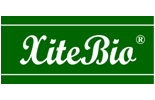Getting your hands on phosphate (P2O5) fertilizer is getting tough this year. Fertilizer supply is low and supplies are depleted or running out in many regions in North America. Even in places where it is available, prices are sky high. All growers know how important phosphorus (P) nutrition is to all crops, so this has many folks understandably worried. Growers are wondering what to do to help their crop get the P it needs while making the most of whatever fertilizer they do have. In this week’s edition of growing possibilities, we will be looking at the ways you ensure your crops’ P nutrition this year with or without phosphate fertilizers.
P fertilizer prices are at an all-time high. Diammonium phosphate (DAP) is currently $588 USD a ton and monoammonium phosphate (MAP) is currently $642 USD a ton, with both prices increasing by over $100/ton since this time last month (1). Some growers and dealers are reporting that P fertilizer just isn’t available in their region. This has a lot of folks worried about their P fertility management this season, which is understandable even in years without the current market. According to the International Plant Nutrition Institute’s North American soil survey, 68% of soil samples taken in Western Canada were below critical levels for P. The same survey found 65% of soil samples taken in Montana and 83% of samples taken in North Dakota fell below critical levels for P (2).
Part of the reason phosphate fertilizers are becoming more expensive and less available is the fact that the majority of the P in phosphate fertilizers comes from mineral P sources, a dwindling non-renewable resource. Inorganic P mined for use in fertilizers is finite, and with the worldwide demand for P is increasing due to our expanding global population, we are expected to surpass our supply by as early as 2033 (3).
So what can growers do to get P to their crops this year?
P can be added to soil in several ways other than with traditional P2O5 fertilizers, such as manure, organic matter or plant debris from previous crops. But there is more to adding P to your field than just applying it to the soil. Applied phosphate fertilizers have an average efficiency of less than 50% (4), meaning more than half of the fertilizer you apply will not be available to your plants and will instead become bound by soil particles, creating phosphate compounds that plants cannot use. For starter fertilizers applied in the spring this is an even larger concern, as soil-phosphate binding increases in cold soil, further diminishing plant-available phosphate reserves.
Increasing the efficiency of applied P sources is essential, especially in a year where your fertilizer applications may be reduced. Phosphate solubilizing bacteria, like the Bacillus species found in XiteBio® Yield+, are a good complement to your plant fertility program that can increase your plants’ access to soil phosphates throughout the growing season. Phosphate solubilizers break the bonds between phosphates in the soil and soil particles that bind to them and lock them up, creating plant-available forms of phosphate and increasing the efficiency of your fertilizer application. This solubilisation doesn’t just increase the P coming from your fertilizers either; XiteBio® Yield+ also solubilizes fixed phosphates naturally present in the soil or leftover from previous fertilizer applications. This leftover P is referred to as “legacy soil P” and presents an opportunity for growers to tap into an efficient, sustainable source of soil P already in their fields (5). XiteBio® Yield+ can be applied in the seed furrow along with compatible starter fertilizers and has been shown to provide incremental yield gains on treated crops. To learn more about how XiteBio® Yield+ can enhance your phosphate management program as well as your ROI, Click Here.
References:
3) Duan, M., O’Dwyer, E., Stuckey, DC., Guo, M. (2019). Wastewater To Resource: Design of a Sustainable Phosphorus Recovery System. ChemistryOpen, 8(8):1109-1120. doi: 10.1002/open.201900189
4) The Efficient Use of Phosphorus in Agricultural Soils, The Fertilizer Association of Ireland in association with Teagasc, Technical Bulletin Series – No. 4, February 2019
5) Rowe, H., Withers, P.J.A., Baas, P. et al. Integrating legacy soil phosphorus into sustainable nutrient management strategies for future food, bioenergy and water security. Nutr Cycl Agroecosyst 104, 393–412 (2016). https://doi.org/10.1007/s10705-015-9726-1


